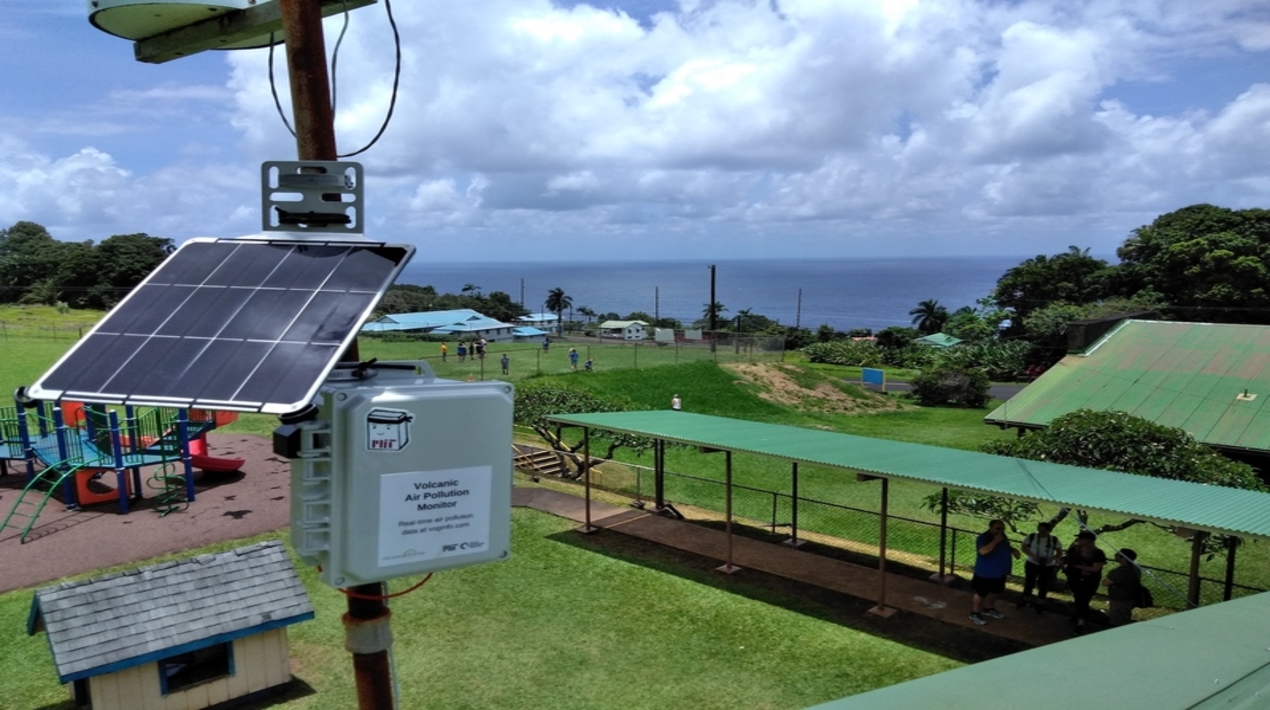
Extreme and dangerous air pollution events cause a major threat to public health and safety. Monitoring the pollutants in the atmosphere and predicting the level of human exposure are challenging. In the United States, the primary sources of outdoor air-quality data are from ground-based, government-regulated air-quality monitoring systems that measure pollutants such as ozone and particulate matter.
In a new study funded by the U.S. Environmental Protection Agency (EPA), U.S. researchers demonstrate an alternate approach for monitoring extreme air-quality events with the use of low-cost sensor (LCS) networks. The work was carried out in mid-2018 on the Island of Hawaii when the eruption of a volcano filled the air with toxic sulfurous gases and particles. In response, the researchers developed and deployed a network of 40 low-cost sensors around the island to monitor the vog in real-time,
The sensor provided a much higher resolution of localised levels of air pollution than existing air-quality measurements. The paper demonstrates the power of LCS networks in their ability to map pollution exposure and chemical transformation of air pollutants for air-quality research, public health monitoring, and emergency response.
The lead researcher stated that there is a real demand for data and information about the air people are breathing. These low-cost sensors and the regulatory air monitoring systems are necessary to understand what is happening in the air people are breathing.
The sensors provided real-time levels of two toxic components of vog: sulfur dioxide gas (SO2) and airborne particles The sensors are also solar-powered, so they were deployed in remote areas of the island and communicated wirelessly over the cellular network. Due to the small size and low cost of the sensors, the researchers were able to place the sensors at different distances downwind of the volcano, to estimate the full distribution of pollution levels that people were exposed to in all areas around the island.
The data showed a wide range of pollutant exposure. Some residents were exposed to clean air the entire time, while people living in different points downwind of the volcano were exposed to different mixes of pollutants. With the large number of sensors deployed, the researchers were able to quantify these exposures with much higher resolution than is normally possible.
Capturing the pollutant exposure in the atmosphere around the island allowed the researchers to witness how the plume was chemically changing with time. By having sensors at different distances downwind of the event, the researchers were able to estimate the rate at which one pollutant, sulfur dioxide, reacts in the atmosphere and converts into a different one.
Hawaii’s pristine environment, with its small number of pollutants, simple chemistry, and straightforward meteorology, was the ideal test environment to establish the viability of this approach. But this general approach could also be used for measuring urban smog and wildfires. The low-cost, compact, solar-powered design of the sensors allows for the technology to be deployed in several configurations, allowing it to be linked to other air-quality data sources and technologies.
People can use the information from sensors, together with other data sources, to make informed decisions about the health and safety of communities. It also provides an entryway into educating and bringing peace of mind to communities that live with the dangers and harmful effects from reoccurring extreme air-quality events.
The sensor could be used for both science and community engagement as the researchers placed sensors at schools health clinics and some private residences. These types of sensors provide a real opportunity for people and communities to engage in their own air-quality monitoring that’s independent of government monitoring systems.
Poor air quality is one of the largest environmental risk factors for premature mortality, heightened by extreme air-quality events that are becoming annual events in parts of the world. LCS networks provide a way forward for other communities to monitor air quality, especially resource-limited regions where air-quality monitoring systems are even more sparse or nonexistent.
















